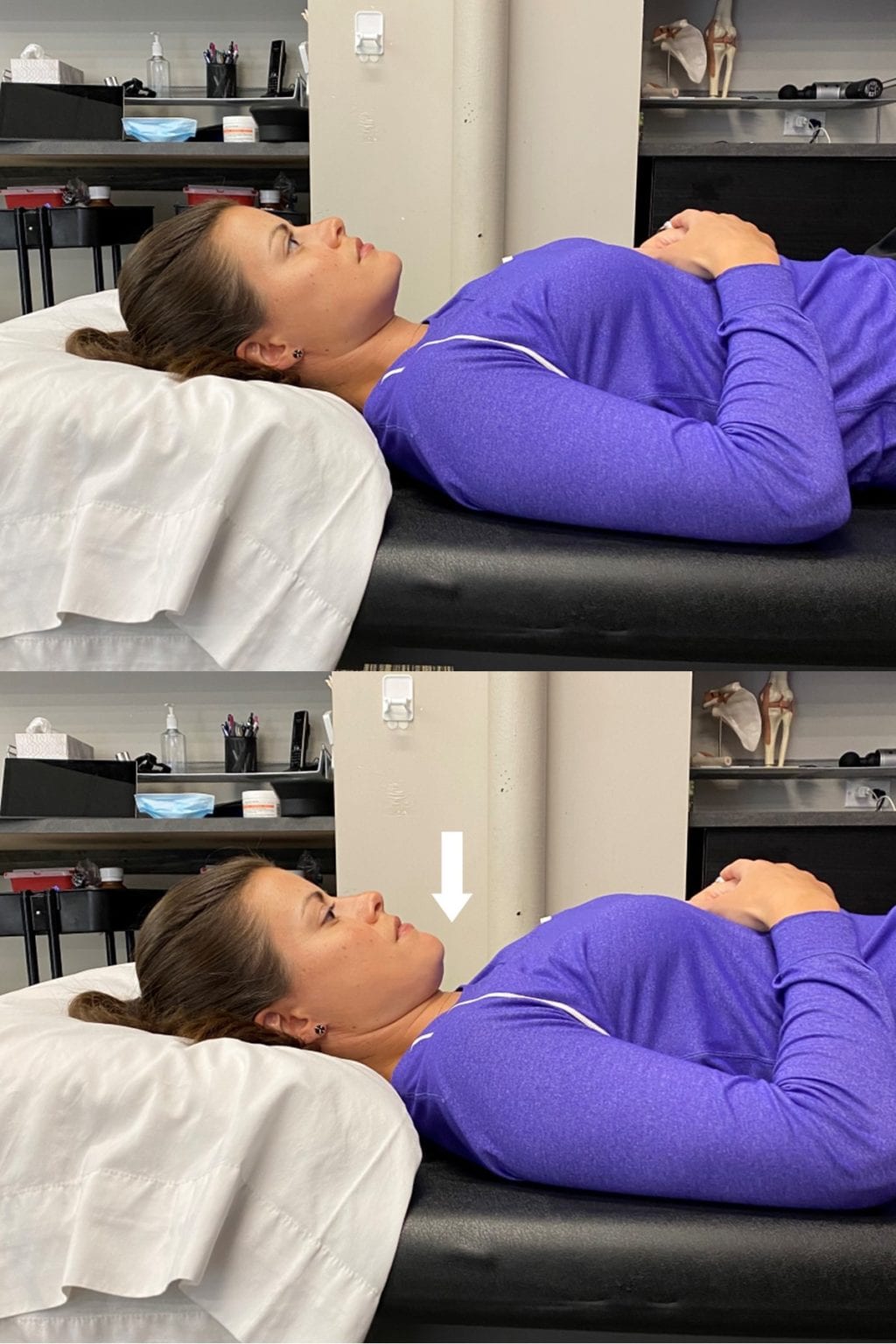

If it feels better by the second round, feel free to add in a third set.

Hold the stretch for 20 seconds, repeating 3 times on each side.Take that same arm, and grab the back of the head.Lift the arm to 90 degrees with a bend in the elbows.Be sure to only go to where the stretch is comfortable. This will help stretch out that muscle and open up some of the joint space in the cervical spine. Your levator scapula muscle attaches at both the neck and the shoulder, and tightness in it can be a common cause of nerve pinches that moves pain down the arm. Hold for 3 seconds and return to normal.Tuck the chin down and back, as if you’re avoiding an unwanted kiss.Keep the eyes lifted and looking forward.Stand up nice and straight, keeping the shoulders down and back.It will help strengthen the muscles on the front of your neck, known as the deep cervical muscles, as well as stretch out the muscles on the back of the neck. This move is simple but effective, helping lift compression off the nerve root. Tam breaks down these four stretches for the neck and arms to relieve that tension. Herniations of these disks and sore muscles in the neck and arms, among other things, can cause the vertebrae to put pressure on the nerves, which in turn results in the numbness and tingling that is most associated with a pinched nerve in the neck. It also houses most of the nerves as they spread from the brain down to the rest of the body. This consists of seven vertebrae, or spinal bones, and is responsible for the support and movement of your skull. He explains that the cervical spine is the portion of your spine that make up your neck. Tam is specifically addressing cervical radiculopathy, one of the most common causes of a pinched nerve in your neck. When this pressure accumulates, the neurons inside our nerves lose a bit of their route of conduction, causing symptoms like numbness, weakness, pain, and tingling. This pressure can be caused by the surrounding muscles, cartilage, or bones, depending on the location of the pinch. A nerve is being pressured by surrounding tissue and thus, loses some circulation. What Is a Pinched Nerve?Ī pinched nerve is exactly what it sounds like. But here, physical therapist Philip Tam, PT, DPT of Bespoke Treatments takes us through some stretches to release one of the most common types of pinched nerve, in the neck. Pinched nerves can happen anywhere in the body. Even without factoring in the discomfort, this pain can make strength training with any type of weight borderline impossible, since holding any weight can be difficult.

Pain can radiate through the neck, upper back, and arms, making desk work or more engaged labor and activity tortuous. Weakness and numbness in the fingers can make it difficult to do just about anything. IF YOU'RE ONE of the many people who has dealt with a pinched nerve, you know how annoying the symptoms can be, especially if you're trying to maintain a fitness regimen.


 0 kommentar(er)
0 kommentar(er)
